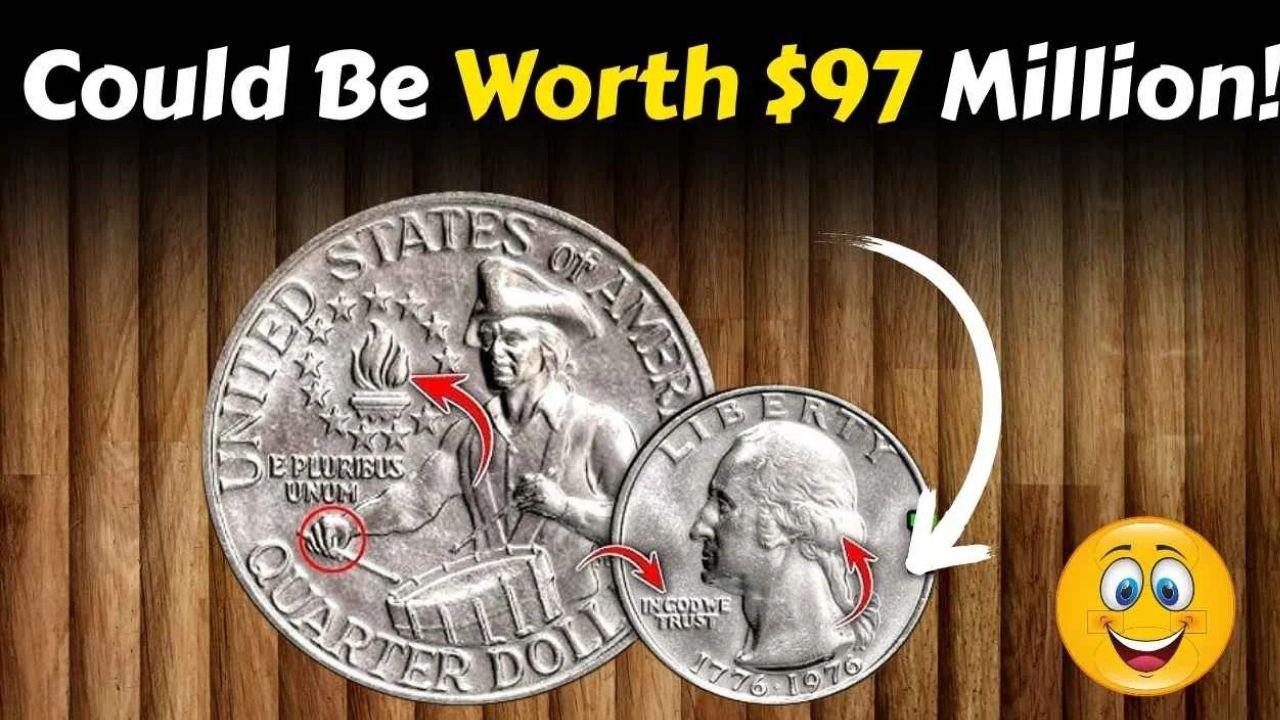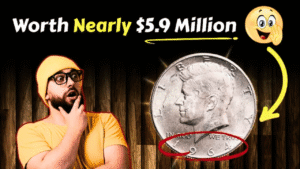The 1976 Bicentennial quarter is more than just pocket change—it’s a piece of American history. Minted to celebrate the U.S.’s 200th birthday, these quarters feature a unique drummer design. While most are worth 25 cents, some rare versions can fetch thousands, and one legendary coin might even be worth millions. Ready to discover if you’re holding a treasure?
What Makes the 1976 Bicentennial Quarter Special?
In 1976, the U.S. Mint released a special quarter to honor America’s bicentennial. Instead of the usual eagle, the reverse side showcases a Revolutionary War drummer, a torch, and 13 stars for the original colonies. Designed by Jack L. Ahr, this coin was only minted for two years, making it a collector’s favorite.
A Symbol of American Pride
The drummer design captures the spirit of 1776. The torch represents liberty, and the stars nod to the nation’s founding. Collectors love its patriotic vibe and limited production run.
Are All 1976 Quarters Valuable?
Most 1976 Bicentennial quarters are common, with billions minted. Their face value remains 25 cents in circulated condition. However, specific versions stand out due to rarity, errors, or condition, driving their value sky-high.
Key Factors That Boost Value
- Rarity: Fewer coins mean higher demand.
- Condition: Pristine, uncirculated coins fetch more.
- Errors: Minting mistakes create unique, collectible pieces.
- Material: Some were struck in silver, increasing their worth.
The Legendary $97 Million Quarter
Rumors swirl about a 1976 Bicentennial quarter valued at $97 million. This jaw-dropping figure likely stems from a flawless silver coin with a rare error. While no sale has confirmed this price, the possibility keeps collectors dreaming.
Is the $97 Million Coin Real?
No documented sale supports the $97 million claim. However, unique error coins or perfect silver proofs could theoretically reach astronomical prices at auction. It’s the holy grail of coin collecting.
Top 4 Most Valuable 1976 Bicentennial Quarters
Here are the rarest and most valuable 1976 Bicentennial quarters, based on recent auction trends and collector interest:
| Coin Type | Estimated Value | Why It’s Valuable |
|---|---|---|
| 1976-S Silver Proof (Deep Cameo) | Up to $15,000 | Mirror-like finish, rare in perfect condition |
| 1976-D Double Die Obverse | Up to $7,500 | Doubling on lettering or design elements |
| 1976-S Silver Uncirculated | Up to $5,000 | High-grade, never-circulated silver coin |
| 1976 No Mint Mark Error | Potentially millions | Extremely rare, possibly unique error coin |
1. 1976-S Silver Proof (Deep Cameo)
Minted in San Francisco, these silver proofs have a stunning, mirror-like finish. In “Deep Cameo” condition, they’re flawless, making them highly sought after. Recent auctions have seen them sell for up to $15,000.
2. 1976-D Double Die Obverse
This Denver-minted coin features a doubling error on the front, visible in the lettering or date. The mistake creates a unique, collectible piece. These can fetch up to $7,500 in top condition.
3. 1976-S Silver Uncirculated
These uncirculated silver quarters from San Francisco are made of 40% silver. Their pristine condition and precious metal content make them worth up to $5,000.
4. 1976 No Mint Mark Error
A rumored Philadelphia-minted coin without a mint mark is the stuff of legend. If it exists, it could be worth millions due to its uniqueness. However, no confirmed examples have surfaced publicly.
How to Spot a Valuable 1976 Bicentennial Quarter
Think you have a rare quarter? Here’s how to check:
- Mint Marks: Look for an “S” (San Francisco), “D” (Denver), or no mark (Philadelphia). “S” coins are often silver.
- Material: Silver quarters feel heavier and ring when dropped on a hard surface.
- Errors: Check for doubled lettering, missing mint marks, or other oddities.
- Condition: Shiny, uncirculated coins are more valuable than worn ones.
- Professional Grading: Get your coin graded by PCGS or NGC for an accurate value.
Tools You’ll Need
- A magnifying glass to inspect details.
- A scale to weigh for silver content (silver quarters weigh about 5.75 grams).
- A coin grading guide or professional appraiser.
Why Collectors Pay Big for These Coins
Collectors chase Bicentennial quarters for three main reasons:
- Historical Significance: They mark a major U.S. milestone.
- Limited Editions: Silver and proof versions were minted in smaller quantities.
- Minting Errors: Mistakes like double dies are rare and exciting.
The Thrill of the Hunt
Finding a valuable coin is like discovering buried treasure. Even common Bicentennial quarters spark joy for their historical charm. The possibility of a million-dollar find keeps collectors hooked.
Tips for Starting Your Coin Collection
Coin collecting is fun, affordable, and rewarding. Here’s how to begin:
- Check Your Change: Look through pocket change or old jars for 1976 quarters.
- Learn the Basics: Study mint marks, errors, and grading standards.
- Store Properly: Use coin holders to protect your finds.
- Join a Community: Connect with collectors online or at local coin shows.
- Get Professional Help: Have rare coins graded by experts like PCGS or NGC.
Where to Find Bicentennial Quarters
- Local coin shops or pawn shops.
- Online marketplaces like eBay (beware of fakes).
- Estate sales or flea markets.
- Your own change or family heirlooms.
FAQs About 1976 Bicentennial Quarters
1. Are all 1976 Bicentennial quarters valuable?
No, most are worth 25 cents unless they’re silver, have errors, or are in pristine condition.
2. How do I know if my quarter is silver?
Silver quarters have an “S” mint mark and weigh about 5.75 grams. They also ring when dropped.
3. What’s the rarest 1976 Bicentennial quarter?
The rumored “No Mint Mark” error coin is the rarest, potentially worth millions if it exists.
4. Where can I sell a valuable quarter?
Try reputable auction houses, coin dealers, or online platforms like Heritage Auctions or eBay.
5. Should I clean my Bicentennial quarter?
Never clean coins—it can damage them and lower their value. Leave them as-is for grading.
Conclusion: Could You Be Holding a Fortune?
The 1976 Bicentennial quarter is a small piece of history with big potential. While most are worth their face value, rare versions could make you thousands—or even spark dreams of a million-dollar payday. Next time you find one, check it closely. You might just have a hidden gem. Start searching your change today, and who knows? Your next quarter could be a collector’s dream!




